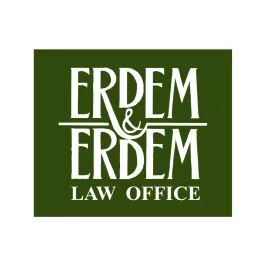Distortion of competition in the relevant market through predatory pricing is a common form of competition infringement. In practice, an undertaking in a dominant position aims to push its rivals out of the market by obstructing their competitiveness with low prices, and prevents potential rivals from entering the market. After rivals are pushed out of the market, the undertaking compensates its losses by increasing its prices above the competitive price limit.
In the light of the foregoing, this article will review predatory pricing as a common form of infringement on competition.
Legal Basis
Article 6, entitled "Abuse of Dominant Position", of the Act on the Protection of Competition No. 4054 ("Competition Act") states a non numerous clausus list of abuses of dominant position.
The Competition Board ("Board") accepts predatory pricing as an abuse of dominant position, despite not being listed in this above-mentioned article. For instance, the Board accepted in its decision dated 23.11.2000 and numbered 00-46/488-2661 ("Microsoft Decision"), that predatory pricing is an abuse of dominant position after asserting that "Article 6 of Act No. 4054 prohibits predatory pricing by undertakings that have a dominant position."
In a recent decision of the Board, it is also expressly stated that predatory pricing may be considered an abuse of dominant position2.
On 18.07.2013, the Draft Guidelines on the Evaluation of Exclusionist Misconduct of Dominant Undertakings3 ("Draft Guidelines") were published on the official website of the Competition Authority ("Authority") and submitted to public opinion. In these Draft Guidelines, predatory pricing is defined as an abuse of the dominant position and its conditions are explained.
Definition
Under the decisions of the Board, predatory pricing is generally defined as the pushing out of rivals from the market by taking a dominant position in the market with an aggressive price decrease policy followed by a mid or long term price increase policy4.
The Board asserts in some decisions, by referring to the potential competition, that predatory pricing results also in the pushing out of "existing or potential rivals" from the related market5.
Evidently, potential competition shall always be taken into account. As a matter of fact, concentration analysis is generally done in two steps consisting of the positions of both existing and potential rivals6.
The definition of predatory pricing set forth in the Draft Guidelines includes all elements previously stated in the Board's decisions. Thus, a full and correct definition of such competition infringement is given in the Draft Guidelines:
"Predatory pricing is an anti-competitive pricing strategy by which a dominant undertaking engages in predatory conduct by deliberately incurring losses (sacrifice) in the short term, so as to foreclose or discipline or prevent by other means the competitiveness of one or more if its actual or potential competitors with a view to strengthening or maintaining its market power."
Historical Development
The Board gave its first decisions on predatory pricing in the 1990s. The Board, in those decisions, gave a general decision on this practice and stated that it should be considered under Article 6 of the Competition Act7.
Then, the Board stated step by step in its decisions the required conditions in order for a company's behavior to be considered as predatory pricing. For instance, in the Board's decision ("Aycell Decision"), dated 14.08.2003 and numbered 03-56/655-3018, the Board called attention to the objective of the undertaking which allegedly applied predatory pricing and decided that there was no predatory pricing since Aycell did not intend to push its competitors out of the market.
In addition to the abovementioned condition, the Board also specified in its decision dated 19.10.2004 and numbered 04-66/955-2319 ("Hürriyet Gazetesi"), that a price should be temporarily determined as being below the product value in order for it to raise the question of predatory pricing. A temporary period of time means a period of time during which a product may be hold to the market.
It is also emphasized in the Board's decision dated 05.06.2008 and numbered 08-37/487-17110 ("evdi.com.tr Decision"), that the undertaking which is supposedly engaged in predatory pricing be in a dominant position in order for it to be the question of predatory pricing.
Moreover, in its decision dated 30.12.2009 and numbered 09-61/1498-39411, the Board referred to the condition of profitability and emphasized that in predatory pricing, the related undertaking should earn profits by increasing the prices afterwards.
When the Board's recent decisions are examined, it is observed that the Board evaluated the abovementioned conditions together and determined that there is no predatory pricing in the event that one of the conditions is not fulfilled12.
Finally, as per the Board's practice over the last fifteen years, the determined conditions are handled and expressed in the Draft Guidelines.
Conditions
To determine whether or not there is predatory pricing, the conditions applied are as follows:
Pre-condition: To be in Dominant Position
In order to be considered an abuse of dominant position, the primary required condition (pre-condition) is that the relevant undertaking is in the dominant position in the relevant market.
However, when the Board's decisions are examined, it is mostly seen that the Board does not make such a determination. For instance, in its decision dated 06.12.2012 and numbered 12-62/1633-598, in which it defends that Kale Kilit ve Kalıp Sanayi Anonim Şirketi has not abused its dominant position through predatory pricing and a rebate system ("Kale Kilit Decision")13, the Board did not make a dominant position determination due to its determination that the pricing policies did not constitute an infringement of competition.
The Draft Guidelines (§7) set forth that in cases where no dominant position exists or of the existence of one of the states of abuse, the Board may choose not to examine the other element. It is not possible to agree with such an opinion of the Board.
The Draft Guidelines were prepared during the European Union accession period, as part of the harmonization of the European Union Acquis and Turkish Law, and in this context, the Guidance on the Commission's enforcement priorities in applying Article 82 of the EC Treaty to abusive exclusionary conduct by dominant undertakings ("Guidance") the was taken as example. The Guidance explicitly state that the first thing to be done is to determine whether the undertaking is in a dominant position (§9).
Other Conditions
In evaluating predatory pricing, the Board particularly examines if the prices of the undertaking in the dominant position are below production costs (competitor test), the purpose of the undertaking in the dominant position in implementing the predatory pricing and if there is a possibility of profitability once the strategy results in success14.
The above mentioned criteria are listed under the Draft Guidelines. In accordance with the Draft Guidelines, in the competitor test, the possibility of market closure to a competitor with equal effectiveness is investigated.
Within the competitor test, average avoidable cost (AAC) and long term average increasing cost (LTAIC) are evaluated. AAC is obtained by dividing an undertaking's saved costs in the event it goes out of business to the total production amount whose production has been abandoned. LTAIC is found by subtracting the total production cost accrued where the related product was not produced from the total production costs of an undertaking and dividing this remaining cost by the production amount related to said product. In other words, the pricing under the AAC demonstrates that the undertaking in the dominant position sacrifices short-term profit and the competitor with equal effectiveness may not be able to provide services to customers without suffering a loss. Moreover, the pricing under the LTAIC sets forth that the undertaking in dominant position cannot bear the entirety of the directly relatable fixed costs incurred due to production of the related product or service and thus the competitor with equal effectiveness may be excluded from the market.
The costs expressed above are examined in detail in the Kale Kilit Decision of the Board15.
While analyzing the undertaking in a dominant position, the issue of whether the implementation has arisen as a result of market forces or within a systematic plan intended to disable the competitor is investigated. The Draft Guidelines do not put emphasis on this criterion; nevertheless the Board considers and examines this criterion in its decisions16.
Lastly, the undertaking in a dominant position must reap something from this implementation. The harvest refers to the earnings accrued in the long term following the predatory pricing which caused the loss suffered in the short term. This criterion has not been explained in detail in the Draft Guidelines.
Conclusion
Predatory pricing represents one of the abuses of dominant position. The Board has evaluated the practice in detail in different decisions. The practice should be examined under the Draft Guidelines since all conditions stated in the Board's decisions should have been included in the Draft Guidelines. Nevertheless, in the Draft Guidelines, it is not mentioned that (i) occupying a dominant position is a pre-condition for predatory pricing. In addition, no reference is made to (ii) the conditions of profitability and objective and to (iii) detailed decisions of the Board.
In other words, the Draft Guidelines are not sufficient to guide undertakings in their practices.
Footnotes
1 See the following link to reach the Board's decision:http://www.rekabet.gov.tr/File/?path=ROOT%2fDocuments%2fGerek%25c3%25a7eli%2bKurul%2bKarar%25c4%25b1%2fkarar312.pdf (accesson on: 03.10.2013).
2 For instance, see Board's decision dated 20.06.2013 and numbered 13-39/496-218, http://www.rekabet.gov.tr/File/?path=ROOT%2fDocuments%2fGerek%C3%A7eli+Kurul+Karar%C4%B1%2f13-39-496-218.pdf (accessed on: 03.10.2013) or Board's decision dated 18.07.2013 and numbered 13-46/589-259, http://www.rekabet.gov.tr/File/?path=ROOT%2fDocuments%2fGerek%C3%A7eli+Kurul+Karar%C4%B1%2f13-46-589-259.pdf (accessed on: 03.10.2013).
3 Opinions regarding the Draft Guidelines should have been sumitted unti 08.09.2013. See the following link to reach the Draft Guidelines: http://www.rekabet.gov.tr/default.aspx?nsw=aVa3WSjRz7DBxI8WRvMWVA==-H7deC+LxBI8= (accessed on: 03.10.2013).
4 For such definition, see for instance the Board's decision dated 09.05.2013 and numbered 13-27/371-172, http://www.rekabet.gov.tr/File/?path=ROOT%2fDocuments%2fGerek%C3%A7eli+Kurul+Karar%C4%B1%2f13-27-371-172.pdf (accessed on: 03.10.2013).
5 For such definition, see for instance Board's decision dated 09.05.2013 and numbered 13-27/371-172, http://www.rekabet.gov.tr/File/?path=ROOT%2fDocuments%2fGerek%C3%A7eli+Kurul+Karar%C4%B1%2f13-27-371-172.pdf (accessed on: 03.10.2013).
6 See for instance Board's decision dated 06.02.2013 and numbered 13-09/127-57, http://www.rekabet.gov.tr/File/?path=ROOT%2fDocuments%2fGerek%C3%A7eli+Kurul+Karar%C4%B1%2f13-09-127-57.pdf (accessed on: 03.10.2013).
7 For instance see the Board's decision dated 26.11.1998 and numbered 93/750-159http://www.rekabet.gov.tr/File/?path=ROOT%2fDocuments%2fGerek%25c3%25a7eli%2bKurul%2bKarar%25c4%25b1%2fkarar10.pdf (accessed on: 04.10.2013) or the Board's decision dated 29.02.2000 and numbered 00-9/89-44 http://www.rekabet.gov.tr/File/?path=ROOT%2fDocuments%2fGerek%25c3%25a7eli%2bKurul%2bKarar%25c4%25b1%2fkarar41.pdf (accessed on: 04.10.2013).
8 To reach the decision http://www.rekabet.gov.tr/File/?path=ROOT%2fDocuments%2fGerek%25c3%25a7eli%2bKurul%2bKarar%25c4%25b1%2fkarar742.pdf (accessed on: 04.10.2013) Also see the Board's decision dated 02.10.2002 and numbered 02-60/755-305, http://www.rekabet.gov.tr/File/?path=ROOT%2fDocuments%2fGerek%25c3%25a7eli%2bKurul%2bKarar%25c4%25b1%2fkarar633.pdf (accessed on: 04.10.2013).
9 To reach the decision. http://www.rekabet.gov.tr/File/?path=ROOT%2fDocuments%2fGerek%25c3%25a7eli%2bKurul%2bKarar%25c4%25b1%2fkarar1027.pdf (accessed on: 04.10.2013).
10 To reach the decision http://www.rekabet.gov.tr/File/?path=ROOT%2fDocuments%2fGerek%25c3%25a7eli%2bKurul%2bKarar%25c4%25b1%2fkarar2474.pdf (accessed on: 04.10.2013).
11See the following link to access the Board's decision: http://www.rekabet.gov.tr/File/?path=ROOT%2fDocuments%2fGerek%25c3%25a7eli%2bKurul%2bKarar%25c4%25b1%2fkarar2474.pdf (accessed on: 04.10.2013).
12 For instance, see the Board's decision dated 18.07.2013 and numbered 13-46/589-259, footnote 2.
13 See the following link to reach the Board's decision: http://www.rekabet.gov.tr/File/?path=ROOT%2fDocuments%2fGerek%C3%A7eli+Kurul+Karar%C4%B1%2f12-62-1633-598.pdf (accessed on: 03.10.2013).
14 Further information may be found in the Board's decision dated 18.07.2013 and numbered 13-46/589-259. To access the decision see footnote 2.
15 For further information see the footnote 13.
16 Further information may be found in the Board's decision dated 06.12.2012 and numbered 12-62/1622-598. To access the decision, see the footnote 13.
The content of this article is intended to provide a general guide to the subject matter. Specialist advice should be sought about your specific circumstances.

